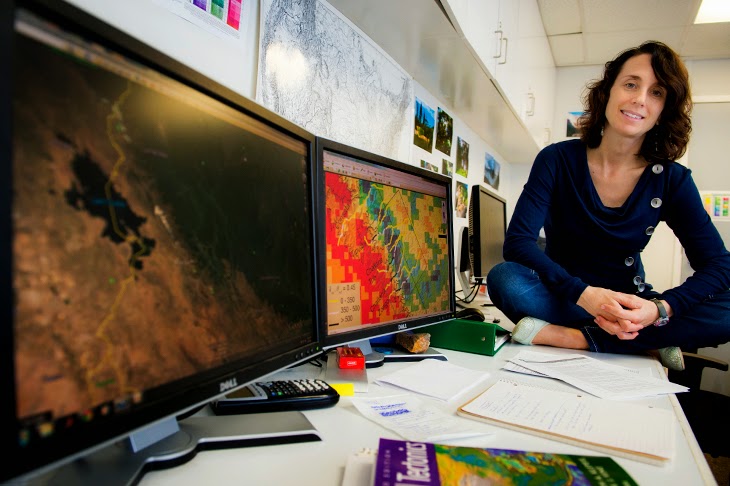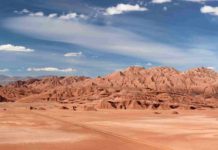
Nicole Gasparini was going upstream against a major trend in geologic research. Many geologists ascribe to the popular hypothesis about the formation of very steep mountain ranges: that a wet climate and heavy rainfall on one side of a mountain range are needed to drive erosion and uplift the mountain to high elevations.
Gasparini, assistant professor of earth and environmental sciences at Tulane University, wanted to test the popular hypothesis.
So Gasparini used a computer model that she helped develop 20 years ago to create different scenarios, varying rainfall amounts in a small area on the eastern side of the Andes Mountains in northern Bolivia. She and a colleague used the computer simulations of an area of about 2,000 square miles, approximately the size of Delaware, to examine every situation they could imagine.
“We worked on this for six years. It was a labor of love. We just did not see climate in it,” Gasparini says.
Ironically, the scientist who works at near sea-level on the Tulane uptown campus has never been to the mountainous area in South America.
Using the computer model and measurements from other scientists, Gasparini and her colleague showed the grinding together of the Earth’s tectonic plates in the area and the resulting upward movement of rocks were key to shaping the eastern side of the mountain—more than the heavy rainfall.
Their work was lauded in a recent issue of Nature in an article, “Earth science: Rain on the parade.”
“We have tiny snapshots of what’s going on today,” she adds. “We don’t know exactly what went on over the last 30 million years. So you’re never going to have a complete story.”
Now, with funding from the National Science Foundation, Gasparini and her collaborators are building a new, more user-friendly computer model to evaluate other mountain ranges around the globe.
More information:
“Earth science: Rain on the parade” Alison M. Anders Nature 511, 413–414 (24 July 2014) DOI: 10.1038/511413a
Note : The above story is based on materials provided by Tulane University










